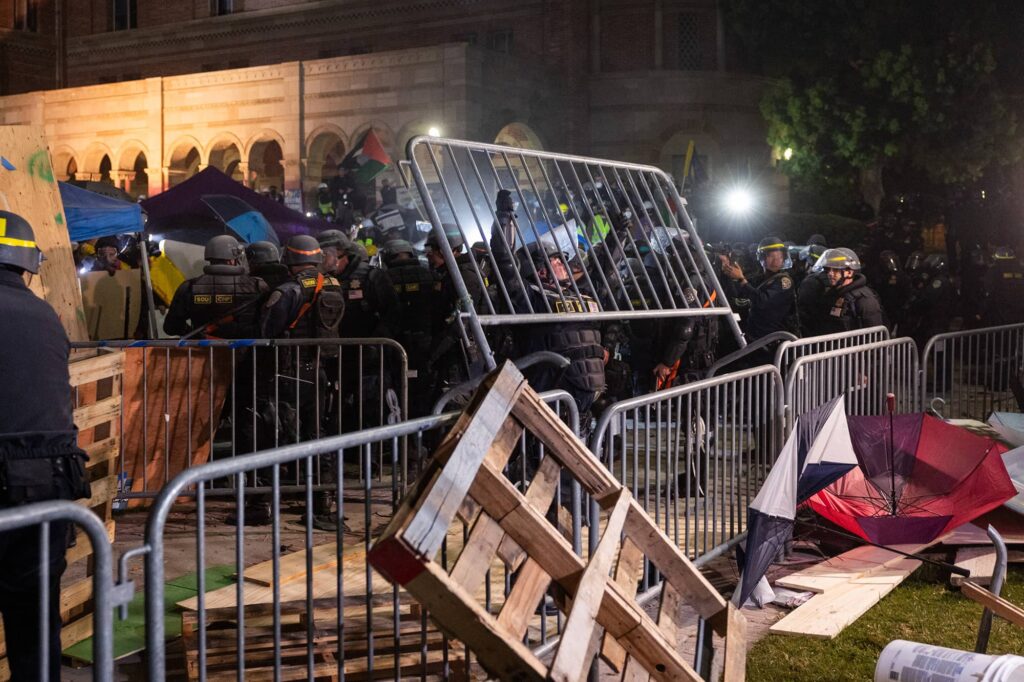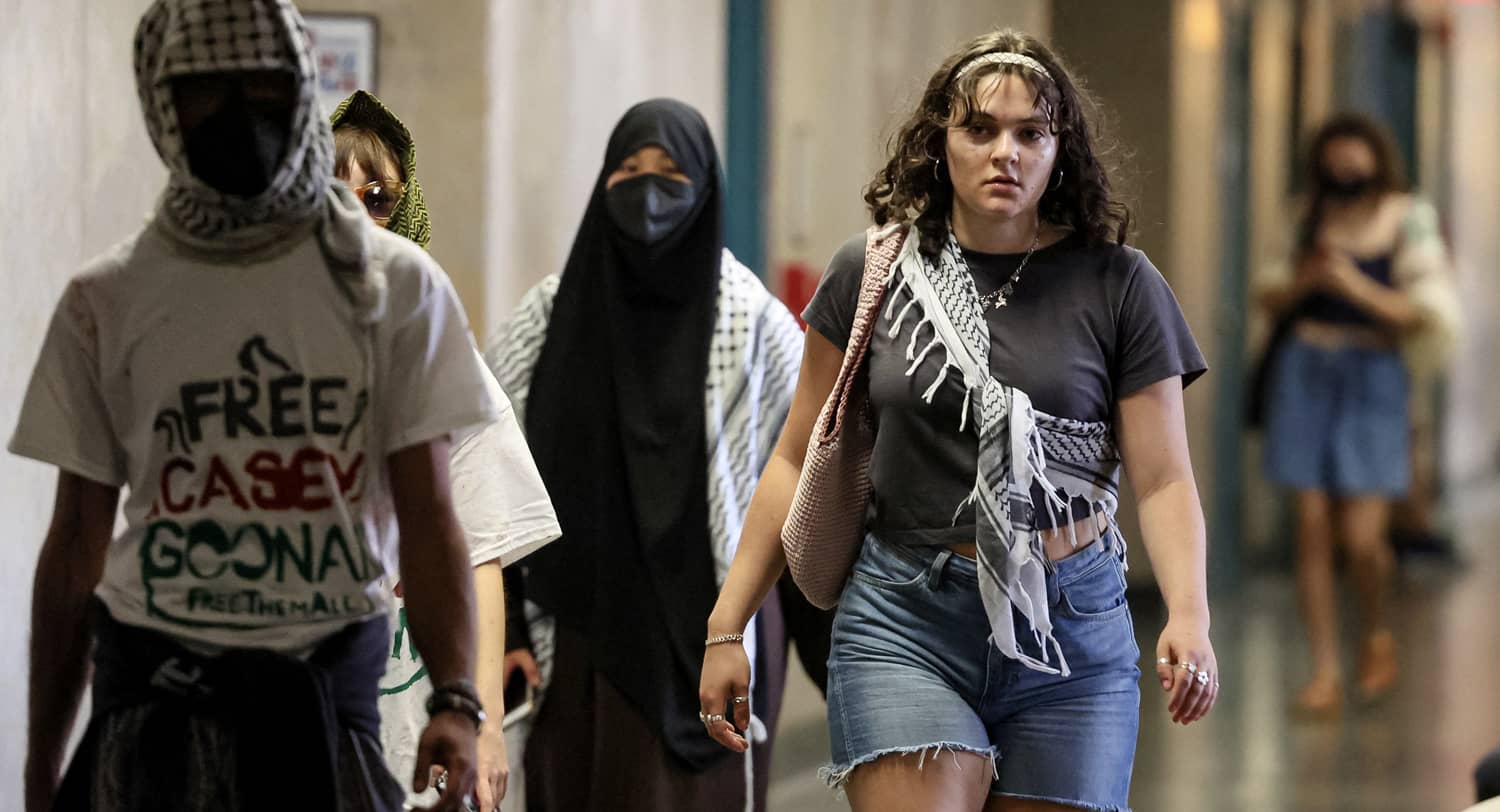Higher education has become a national security risk, for the present and for the long term: this is the lesson of the aftermath of October 7 on campus.
Contemporary great power competition is taking place in many arenas, especially in the dimension of technological innovation. Leading research universities play a vital role in this race. It is in the institutions of higher education, where engineers and scientists are trained and ideas are incubated, that eventually contribute to national defense capacities. Universities are therefore vital to national security. Similarly, universities continue to be home to important medical research that can significantly improve health outcomes. Universities continue to carry out indispensable training and research. The nation needs them.
Yet the extensive disruptions at American universities in the wake of the October 7 Hamas attack on Israel have raised doubts in the broader public about the status of higher education. To be sure, there was skepticism about academia prior to October 7. The ever greater cost of tuition, the student debt bubble, the disconnect between college degrees and the job market, and the long-term disappearance of tenured faculty increasingly replaced by adjuncts: all this generated appropriate skepticism. However, the public display of entitled students indulging in systematic antisemitism, destruction of university property, flagrant criminality and crude ideology has eroded much of what was left of respect for universities. The clown show of the three university presidents testifying in Congress became an iconic turning point.
The crisis in American higher education harbors some opportunities. Given the virulence of campus antisemitism and the astonishing reluctance of university leadership to act against it, a space has opened up for Israeli universities to recruit from the cohort of Jewish high school and college students to study in Israel, as an alternative to the hostility they may face on a US campus. (The same argument holds for the smaller Jewish diaspora communities in Europe.) Such an initiative would require strategic thinking both with regard to outreach and to the particular curricular needs of these recruits.
In addition, the crisis also means opportunities for alternative institutions inside the US. Campus protests did not take place at all universities. They were concentrated at the elites, where the student culture of entitlement is greatest. One should expect competition from other institutions that promote themselves as havens of reason and stability, with a stronger grip on academic values than Harvard and Columbia.
There is also an opening for the government to play a role in correcting the problems. Higher education is enormously dependent on federal funding, whether to support research or as a source for student loans. Congress could make eligibility for those loan programs contingent on meeting certain criteria. To date, most of the discussion around a government role has had to do with enforcement of antidiscrimination laws as a path to address antisemitism. That is no doubt important. Yet Congress has another reason to look at higher education: national security.
In the wake of October 7, the anti-Israel protests became pro-Hamas and embraced explicitly anti-American positions, treating the US as the source of all evil, evident in the slogans and banners at campus after campus. For every chanting of “from the river to the sea” there was also graffiti calling for “death to Amerikkka.” Invoking a global intifada means an appeal to kill Jews everywhere, but it also means, literally, advocacy for a violent overthrow of the government, including in America. The program of the protests, in other words, goes far beyond Middle East politics.

A liberal reading of the protestors’ radicalism could write them off as adolescent foolishness. That would be dangerous. Looking back at the past year on campus, one cannot fail to see how an organized network of activists was able to generate considerable disorder across the country. Not only were these coordinated disruptions destructive of the ongoing business of higher education. They point to serious national security threats in at least three different ways.
First, the protest movement was able to create considerable chaos, including violence, not only on campus but across urban areas: blocking highways, impeding access to airports, rioting in downtowns. These disruptions were undertaken ostensibly in response to Israel. One should view them, however, also as dress rehearsals for other mobilizations. If for example, the US were to become directly involved in a conflict, whether in the Middle East, East Asia or elsewhere, we can expect the same radical networks to conspire to arrange similar domestic rioting, stopping traffic, blockading airports and burning downtowns.
Second, this past year’s elision of anti-Zionism and anti-Americanism represents the normalization of an ideological anti-imperialism on some campuses. The simplistic paradigm of oppressor versus oppressed, which makes up the core lesson in too much of the curriculum, has contributed to a crude misperception of the world: America and the West are wrong, the “global South” is right. This miseducation is a tragedy from the perspective of the need to produce future citizens and leaders. It may be amplified by efforts at “elite capture,” when foreign powers buy off the American professoriate. There is an even more urgent danger: in universities where sensitive technology research is underway, this anti-American ambience may already be providing ideological cover for espionage in the labs. If the US and its allies are evil, then–so some students may conclude–one can be on the right side of history by aiding the enemy by passing on information. That of course would be treason.
Third, this education to anti-Americanism will have long-term effects. One of the star spies of the Cold War, Kim Philby, became an ideological radical as a student at Cambridge before going on later to become a notorious agent for the Soviet Union. This is the template of the elite student choosing to side with the adversary. American colleges and universities may be growing our own now, providing the mental foundations for future assets for China or Russia, Iran or North Korea. If they are rallying on campus today for Hamas and Hizbullah, what will stop them from working for Beijing or Tehran tomorrow?
There is much that is good and vital about higher education, and academic leaders could on their own address security vulnerabilities presented by the pro-Hamas protests. They could push back against ideological extremism, scrutinize and limit foreign donations, and guarantee security in sensitive research areas. They could also review admissions policies which in some instances appear to have favored ideological applicants. Favoring US veterans would be a salutary alternative.
Yet from this past year, it is clear that some higher education leaders will not change their habits on their own. Some shifts may be achieved by donors becoming wiser with their gifts to higher education. But if universities cannot fix themselves on their own, government action, starting with congressional hearings, will be necessary. Universities are too important to be surrendered to enemies, foreign or domestic.

